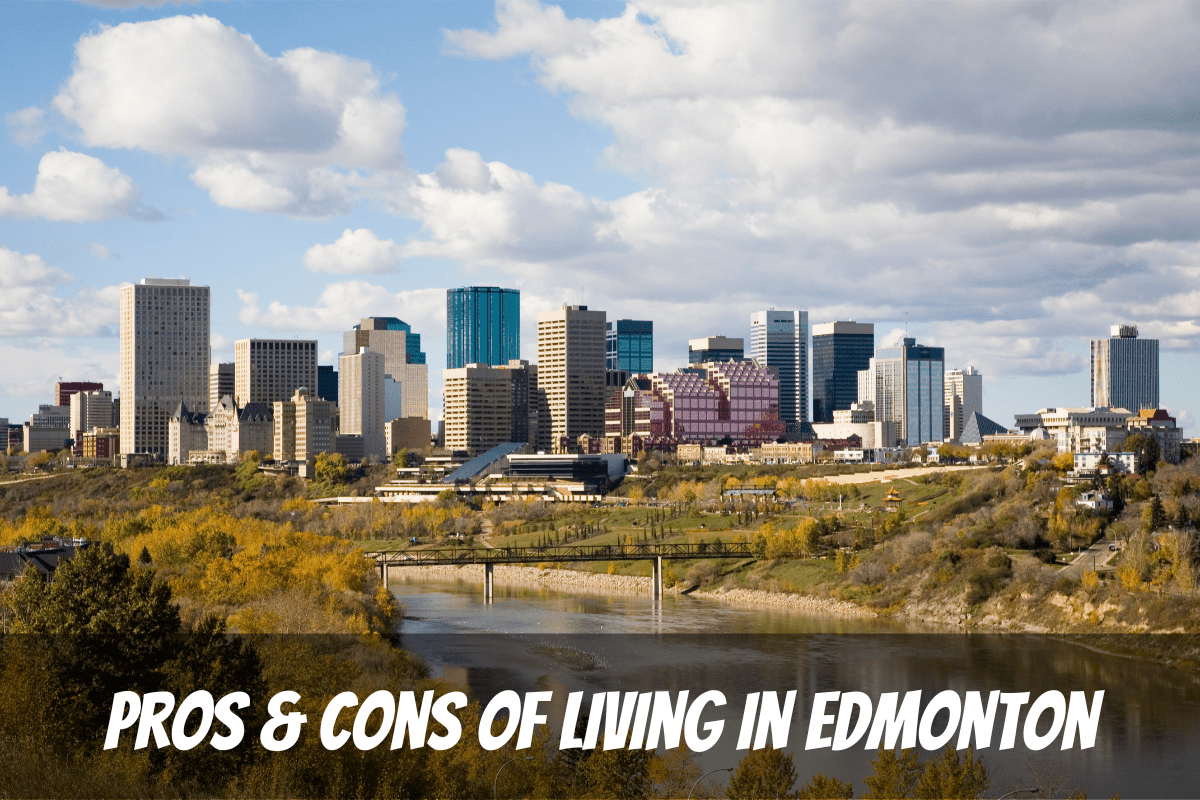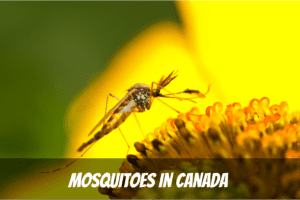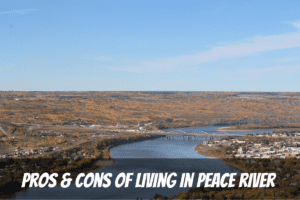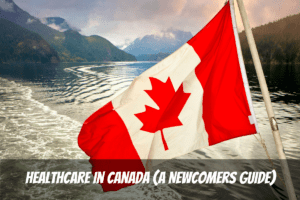Edmonton may not be an obvious choice if you are looking to move to Canada, but it has a number of benefits for new immigrants.
House prices in Edmonton are low compared to the rest of Canada, as is the general cost of living. There is a diverse range of job opportunities and disposable income is high.
In addition, it is a beautiful city, with extensive parkland, and it is one of the sunniest cities in Canada.
This post will give you the facts you need about Edmonton. We will also try to describe the city based on our own experiences and those of people that live there.
1. Facts About Edmonton
Edmonton is Alberta’s capital city and is the political and industrial centre of the province. In terms of population size, it comes second to Calgary (it’s southern Albertan neighbour).
Edmonton has a smaller downtown area than many major Canadian cities but has several large suburbs. For many people, their work, home and social lives are all centred around their suburbs.
The people of Edmonton have a reputation for being friendly and relaxed, and the city isn’t quite so work-oriented as other major cities. Edmonton’s vibe is more “small-town” than you would expect for its size. People that I know living in Edmonton say it is a great place to bring up children.
The municipality of Edmonton has a population of just over a million. But it has over 30 other municipalities to give a greater metropolitan population of around 1.4 million. Some of the larger municipalities include Sherwood Park, St Albert and Leduc.
Some basic statistics for Edmonton are given below:
| Edmonton | |
|---|---|
| Province | Alberta |
| Population | 1,010,899 |
| Population Growth 2016/2021 | 8.30% |
| Population Born in UK 2016 Census | 16,875 |
| Time Zones | MST (UTC -7) |
| Elevation | 671 |
| Ave Cost Real Estate Jan ’22 | $339,600 |
| Sales Tax | 5% GST |
| Prov Income Tax Low Band* | 10% |
| Prov Income Tax High Band* | 15% |
| Crime Severity Index 2020** | 116 |
| Violent Crime Severity Index 2020** | 127 |
*Note: Provincial Income Tax is Paid in Addition to Federal Income Tax
** Canadian Ave 73.4 & 87.0 (Lower is Better)
2. Where is Edmonton?
Edmonton is the most northerly of the major North American cities. It is in central Alberta, around 600km north of the US border, and 220km northeast of the Rocky Mountains.
Its relatively northern position means that the Northern Lights can often be seen in the winter months.
Edmonton’s landscape is generally flat or rolling. It has deep river valleys and ravines, such as the North Saskatchewan River Valley running through the city. It lies on the border of the prairies to the south, and the Boreal Forest to the North.
3. What is the Cultural Backgound of Edmonton?
As with many Canadian cities, Edmonton has a diverse immigrant population.
Around one-third of Edmonton’s population was born outside of Canada. Of these approximately half originated in Asia, followed by Europe, Africa and the Americas. Of the European immigrants around half are from the United Kingdom,
4. What is the Edmonton Weather Like?
The Edmonton climate is one of extremes. Winters are generally dry and bitterly cold, although temperatures are milder than in the more southern cities of Winnipeg and Saskatoon.
Summers are sunny and hot. Thunderstorms are common through the spring, summer and early autumn. These storms can be severe and occasionally destructive, often bringing hailstones and sometimes tornadoes.
Spring and fall seasons are short and the weather at these times of the year can be very variable.
The best aspect of Edmonton’s weather is its high number of sunshine hours. It has a relatively dry climate and is one of the sunniest cities in Canada.
Edmonton’s northerly position means that it has over 17 hours of daylight at the summer solstice. However, on the downside, it has few daylight hours during the depths of winter.
| Edmonton | |
|---|---|
| Annual Rainfall (mm) | 348 |
| Annual Snowfall (mm) | 124 |
| Ave Hours Sunshine/Day | 6.3 |
| Ave Jan Temp (DegC) | -10 |
| Ave July Temp (DegC) | 18 |
5. What is the Cost of Living in Edmonton Like
Many immigrants are attracted to Edmonton by the low cost of living. Property prices are less than half of the Canadian average, while salaries are 10-15% higher than the Canadian average.
Over the past 5 years, vehicle gas prices have been consistently lower in Edmonton, than in all other major Canadian cities. Alberta also has the lowest provincial sales tax rates in the country. The result is that Edmontonians have some of the highest levels of disposable income in Canada.
6. What is the Economy of Edmonton Based On?
Edmonton is a major economic centre for northern and central Alberta. The province is rich in oil and gas, and the petrochemical industry plays a massive role in Alberta’s economy.
As a result, Edmonton is quite reliant on the petrochemical industry, and the fortunes of the city tend to follow the ups and downs of the oil industry.
Despite this, there is a very diverse range of job opportunities within the city. There is a growing technology sector, which stems from Edmonton’s status as a leading research and education centre. For example, the University of Alberta is a leader in the field of artificial intelligence research.
7. Does Edmonton Have Good Transport Connections?
Within the city, Edmonton Transit has a large fleet of over 1000 buses, operating in excess of 100 routes. It also has a light rail system. This operates partly underground in the downtown area and connects to the underground Pedway.
For travel within Canada and Internationally, Edmonton International Airport is located around 30km south of downtown Edmonton. Prior to the covid outbreak annual passenger numbers for the airport were close to 8 million.
The transport connections between the airport and the city are not particularly convenient. There is a bus service (the 747) that operates from the Century Park Transit Centre in southwest Calgary, but no direct public transport service from downtown Calgary. The other options are to drive, take a taxi or a private shuttle.
An alternative option for travel within Canada is the Viarail passenger train service. Edmonton lies on the main Viarail line running between Vancouver and Toronto.
There are multiple stops in BC, Alberta, Saskatchewan, Manitoba and Ontario. And from Toronto, you can connect all the way through to Halifax on the east coast. Prior to covid, there were 3 services per week in each direction.
Finally, within the downtown area, Edmonton has a 13km system of skywalks and tunnels. This Pedway connects around 40 buildings and parkades, and also to 3 of the light rail stations.
8. What Outdoor Activities Can I Enjoy in Edmonton?
Edmonton has more parkland per capita than any other city in Canada, with most residential areas having accessible trails for hiking and biking.
The city is justifiably proud of the River Valley Parkway. This river valley with 160km of trails and 20 major parks is the largest urban park in the country.
In the summer the parks are popular with walkers, joggers and bikers. In the winter, the trails transform into a cross-country ski network with regularly groomed trails suitable for all skill levels.
If downhill skiing is more your thing, then there are a number of easily accessible ski hills within the valley:
- Rabbit Hill – good for beginner and intermediate skiers, with terrain parks and a development area.
- Snow Valley – total of 8 runs, plus 2 terrain parks.
- Sunridge Ski Area – total of 12 runs, plus 3 terrain parks.
- Edmonton Ski Club – good for beginner and intermediate skiers, it has a beginners bunny hill, a terrain park and a tubing park.
None of these are in the same league as the ski resorts in the Rocky Mountains. But they are definitely worth visiting for beginner and intermediate skiers.
Another popular winter activity, especially with children, is ice skating. The City of Edmonton has many rinks and ice surfaces that are maintained through the winter.
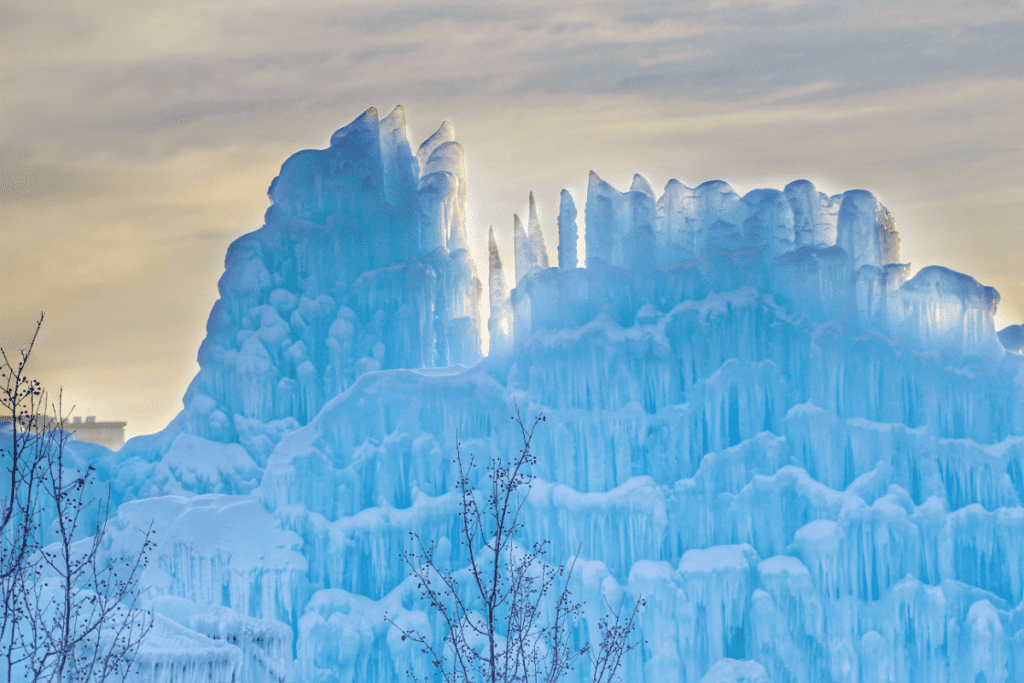
9. Does Edmonton Have Good Entertainment And Nightlife?
Edmonton has lively nightlife, which is centred around the downtown area, on the north side of the river. Most of the city’s nightclubs are here and there is a diverse range of bars and restaurants.
On the south side of the river lies the historic Old Strathcona/Whyte Avenue area. This area is now home to many of the arts and entertainment venues in the city. It doesn’t have the clubbing scene you find north of the river, but you will find many bars, restaurants, and theatres.
Edmonton prides itself on being a centre for the arts. The arts scene is centred around Churchill Square near the downtown, and on the south side of the river around Old Strathcona and the University district.
Here you will find art galleries, theatres, live music venues and concert halls. You can catch performances from the Alberta Ballet Company and the Edmonton Symphony Orchestra.
For shopping, Edmonton has many malls including the famous West Edmonton Mall (see section 10 below for more on this), Kingsway Mall, The Southgate Centre and Edmonton City Centre.
If you are looking for a different type of shopping experience, visit the boutique stores of Old Strathcona. In the same area, you will find the Old Strathcona Antique Mall and the Old Strathcona Farmers Market.
In addition to the main entertainment districts discussed, the suburbs also have their own smaller shopping and entertainment hubs.
Edmonton has a reputation as the “Festival City” due to its diverse range of festivals held throughout the year. Probably the best known and biggest festival is K-Days. Held in Northlands Grounds annually in August, it offers rides, music, a rodeo, food, shopping and a wide range of other shows.
The festival schedule for this coming year has over hundreds of events covering:
- Craft beer
- Folk music
- Mudfest
- Comedy
- Many arts and music festivals
- Jazz
- Foods and wines
- Various winter & ice festivals
- and too many more to mention….
10. What Sports Teams Does Edmonton Have?
Edmonton has 4 professional sports teams:
- Edmonton Oilers – ice hockey team which competes in the National Hockey League (NHL)
- Edmonton Elks – “American football” team competing in the Canadian Football League(CFL)
- FC Edmonton – soccer team which competes in the Canadian Premier League
- Edmonton Stingers – competes in the Canadian Elite Basketball League
If you are a hockey fan, then you can also support the Edmonton Oil Kings playing in the Western Hockey League. Or the Sherwood Park Crusaders, who compete in the Alberta Junior Hockey League.
There are also football and basketball teams competing in amateur and junior leagues, and numerous university sports teams. And if you enjoy rugby, catch the Edmonton Gold who play in the Rugby Canada Super League.
For something a little different, you can watch horse racing at the Century Mile Racetrack and Casino. Alternatively, head to Wetaskiwin for motorsports.
11. Where are the Best Areas to Live in Edmonton?
It is hard to summarise the (literally) 100’s of neighbourhoods in Edmonton. But generally, the areas on the south side of the river, and to the southwest, are the most desirable.
Strathcona on the south side is very popular, as are Strathearn and Ritchie. The downtown area is popular with young professionals, although crime levels here are higher than in some areas.
The neighbourhoods that people warn against tend to be on the northeastern side of the city. Research carefully if you are planning a move to this part of Edmonton.
Some of the other municipalities in the Greater Edmonton Area such as Sherwood Park and St Albert are also popular. These are good choices for raising a family.
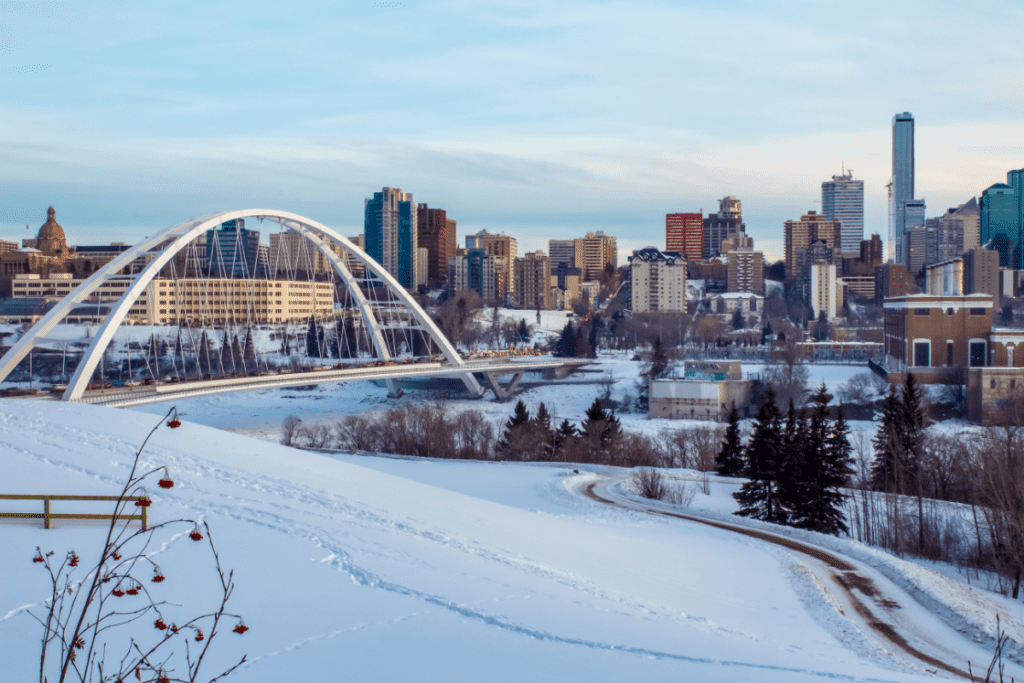
12. What are Crime Levels Like in Edmonton?
Crime rates in Edmonton are somewhat higher than the Canadian averages, and also higher than many of the other major Canadian cities.
Crime rates are higher than those for Toronto and Vancouver, and significantly higher than rates for Calgary. But Edmonton is by no means the worst in Canada, with both Victoria and Winnipeg showing higher rates.
13. West Edmonton Mall
West Edmonton Mall is not just a massive shopping mall. It is also a huge hospitality and entertainment complex, which merits its own section in this article.
It is one of the biggest tourist attractions in Alberta. The mall covers 5.3 million square feet and is home to 800 stores, 100 restaurants and 2 hotels. But this really is only the start.
World Waterpark is a tropical oasis boasting an average temperature of 31 DegC. It has a massive wave pool and 17 unique slides and features. We found this was the perfect place to take the kids when the freezing winter temperatures became too much.
Marine Life offers sea lion shows and has an underground aquarium. This has over 100 species of marine life including sharks, turtles and reptiles. And for something a bit different you can arrange a “Meet and Greet” with a penguin!!
Galaxyland is North America’s largest indoor amusement park, with 27 rides including 4 roller coasters.
The attractions really are too numerous to mention here but they include:
- Race karting
- Adventure golf and mini golf
- An escape room
- Ten-pin bowling
- Mirror maze
- Ice skating rink
14. What are the Pros and Cons of Living in Edmonton?
Pros
- Affordable housing
- Low sales tax
- High disposable income
- High sunshine hours
- West Edmonton Mall
- Great arts scene
- Parkland areas
Cons
- Cold winters
- Above-average crime rates
- Downtown/Airport transport links poor
Sources of Data Statistics Canada & Canadian Real Estate Association
